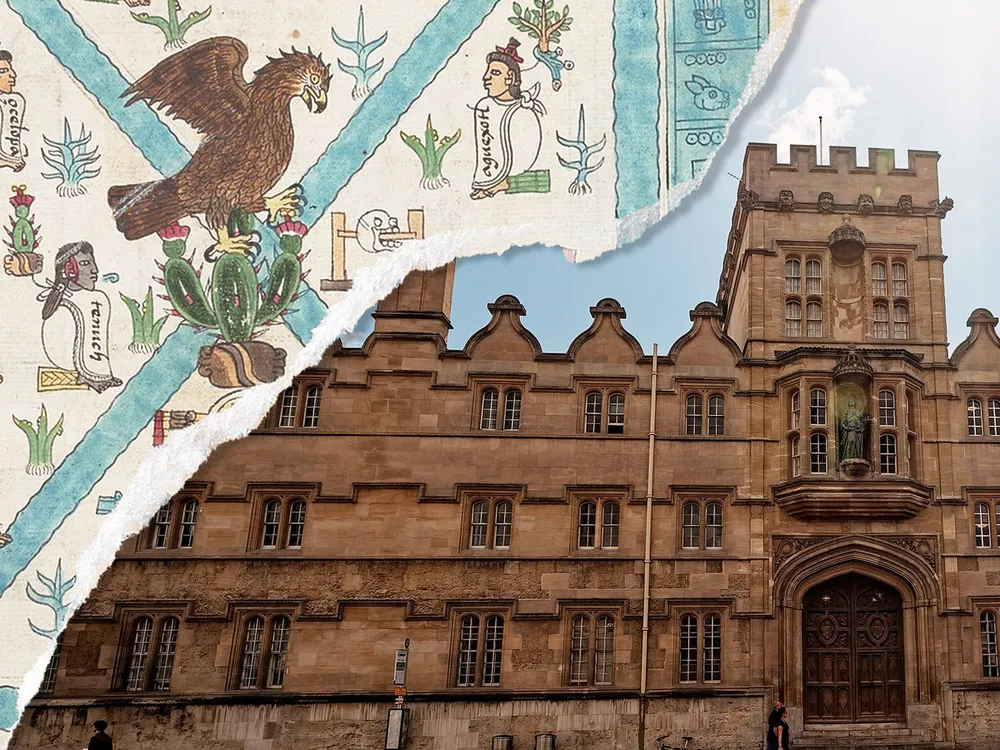
Our understanding of history is often shaped by simplified timelines and cultural perceptions that can lead to surprising realizations when examined more closely. One such realization is that the University of Oxford, an emblem of scholarly pursuit, predates the Aztec Empire by over two centuries. This fact, and others like it, can shift how we view the past, disrupt the chronology we’ve subconsciously constructed, and offer a new perspective on the interconnected nature of human history. Here, we’ll explore some fascinating historical juxtapositions that challenge conventional narratives and inspire us to rethink our understanding of the past.
The Timeline Discrepancy
The University of Oxford is widely regarded as the oldest university in the English-speaking world, with evidence of teaching dating back to 1096. It became more formally established by 1167, when English scholars returned from the University of Paris after a dispute and sought an intellectual hub at home.
By contrast, the Aztec Empire, known for its sophisticated civilization, monumental architecture, and complex societal structures, didn’t begin to form until the early 15th century, around 1428. The Aztecs, or more accurately the Mexica people, created their grand capital, Tenochtitlan, only then. When we think of ancient societies, we often place the Aztecs in a more distant past than medieval Europe, but this is far from accurate.
This realization reveals that not all world events or civilizations fit into the simplified narratives we create in our minds. We often think of European medieval history as existing in a different sphere from pre-Columbian American civilizations. However, viewing these historical timelines side by side shows that historical developments often occurred in parallel and interacted in surprising ways.
Cleopatra VII, the last active ruler of the Ptolemaic Kingdom of Egypt, reigned from 51 to 30 BC. One of the most enduring misconceptions about Cleopatra is her proximity in time to the construction of the Great Pyramids of Giza, which were built around 2560 BC. In reality, Cleopatra lived more than 2,400 years after the pyramids were constructed and is chronologically closer to the first moon landing in 1969 AD (just under 2,000 years after her death) than to the building of these ancient structures.
The Perspective Shift
Understanding this timeline helps illuminate the true depth of human history. The pyramids were already ancient relics during Cleopatra’s time. This insight challenges the tendency to group all “ancient” history into a vague, homogenous block. It shows that history is not a singular thread but a complex weave of events that stretch across millennia.
An Overlapping Epoch
The woolly mammoth, often depicted as a prehistoric creature that roamed a world uninhabited by humans, actually survived well into the age of human civilization. Some populations of mammoths on Wrangel Island, a remote Arctic refuge, were alive as recently as 1650 BC. This coincides with the construction of the Great Pyramid of Giza (circa 2560 BC). While the pyramids were being erected in Egypt, isolated mammoth herds were still grazing in parts of the far north.
Implications for Our Understanding
This revelation upends the idea that mammoths and humans belong to entirely separate epochs. The fact that ancient Egyptians and woolly mammoths coexisted, even if only for a brief period, reinforces the complexity of timelines. It reminds us that history often unfolds in overlapping chapters rather than distinct, separate eras.
Modern Figures, Different Realities
Anne Frank, whose diary has immortalized her experiences as a Jewish girl hiding during the Holocaust, was born in 1929. In that same year, Martin Luther King Jr., the American civil rights leader who fought for equality and justice, was also born. The overlap of these two figures’ lifetimes surprises many, as they are often studied as representatives of distinctly separate historical moments.
A Surprising Realization
This connection underlines how two pivotal figures in history, often placed in entirely different contexts, shared a moment in time. Anne Frank died in 1945 at the age of 15, but if she had survived, she would have seen King’s historic “I Have a Dream” speech in 1963. This parallel emphasizes how recent some aspects of history truly are, and how interconnected global narratives can be.
The Birth of Institutions and Ideas
Harvard University, founded in 1636, is older than the formal development of calculus, which was independently created by Isaac Newton and Gottfried Wilhelm Leibniz in the late 17th century. Newton’s first significant work on calculus, “De analysi”, was written in 1669 and published posthumously in 1711, while Leibniz’s formal publication dates back to 1684.
Rethinking Intellectual Progress
This fact disrupts the assumption that foundational branches of modern mathematics preceded the establishment of major educational institutions. It invites us to reconsider the sequence of scientific and academic milestones, showing that progress in different fields often unfolds in non-linear and unpredictable ways.
A Technological Anachronism
The concept of a fax machine seems modern, associated with the late 20th century’s office culture. Yet, Scottish inventor Alexander Bain patented the “Electric Printing Telegraph” in 1843, two decades before the American Civil War (1861-1865). The idea of transmitting images over wires existed even as the United States was embroiled in one of its bloodiest conflicts, at a time when the technology seemed disconnected from the harsh realities of warfare.
The Takeaway
This historical fact challenges our understanding of technological development and reminds us that inventions we consider contemporary have deep roots in the past. The notion of image transmission was nascent when the nation was at war, illustrating how technological advancements can sometimes precede the social and infrastructural readiness for their widespread adoption.
Artistic and Architectural Milestones
In 1889, two iconic contributions to culture emerged: the Eiffel Tower in Paris was completed as the entrance arch to the 1889 World’s Fair, and Vincent van Gogh painted *The Starry Night*, one of his most famous works, during his time at the Saint-Paul-de-Mausole asylum. This overlap can be surprising because we often associate technological marvels like the Eiffel Tower with modernity and van Gogh’s artwork with the romantic image of a tortured artist.
Intersecting Worlds
This realization places the world of industrial progress and the intimate world of personal artistic expression side by side. Both events showcase the multifaceted nature of that period, characterized by rapid technological progress and profound artistic exploration.
A Long-Reigning Power
The Ottoman Empire is often depicted in school history books as an ancient regime that rose and fell long before modern times. In reality, the empire, which began in 1299, lasted until the end of World War I in 1918. Its dissolution formally occurred after the armistice that led to the Treaty of Sèvres in 1920 and the establishment of the Republic of Turkey in 1923.
The Modern Legacy
This fact changes how we perceive global conflicts and imperial timelines. The Ottoman Empire was contemporaneous with modern history, influencing global politics, alliances, and conflicts during the 20th century. Its longevity challenges the notion of a “cut-off” between ancient empires and modern states.
Impression
These historical comparisons challenge our ingrained perceptions of time, history, and the sequence of significant events. Understanding that the University of Oxford predates the Aztec Empire, that Cleopatra’s life was closer in time to the moon landing than the building of the pyramids, and that Anne Frank and Martin Luther King Jr. were born in the same year helps us view history not as a set of isolated epochs but as a continuous and interwoven narrative. This broader understanding enriches our perception of the past and shows how our collective human experience is connected through unexpected and intriguing parallels. By reconsidering these overlaps and challenging the simple timelines we hold, we gain a deeper appreciation for the richness and complexity of history.
No comments yet.








